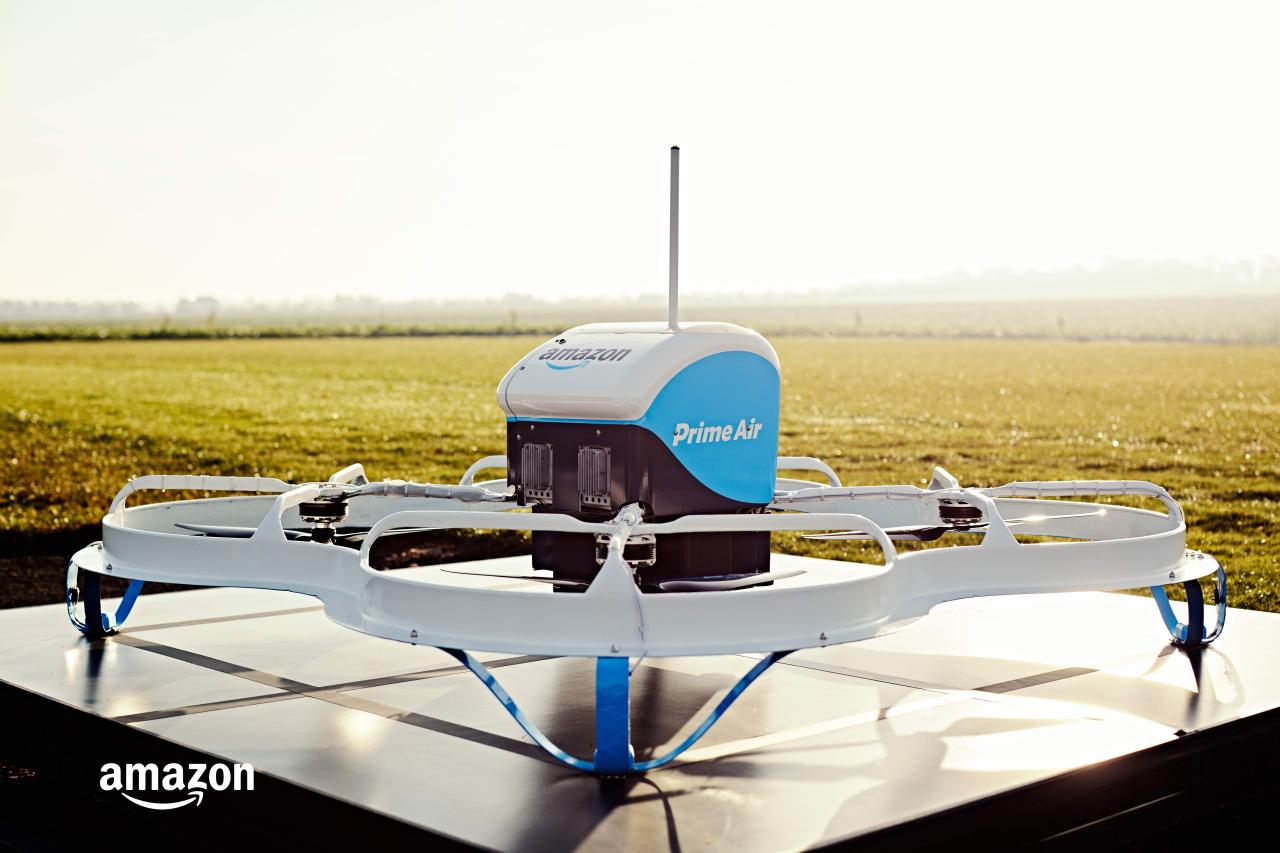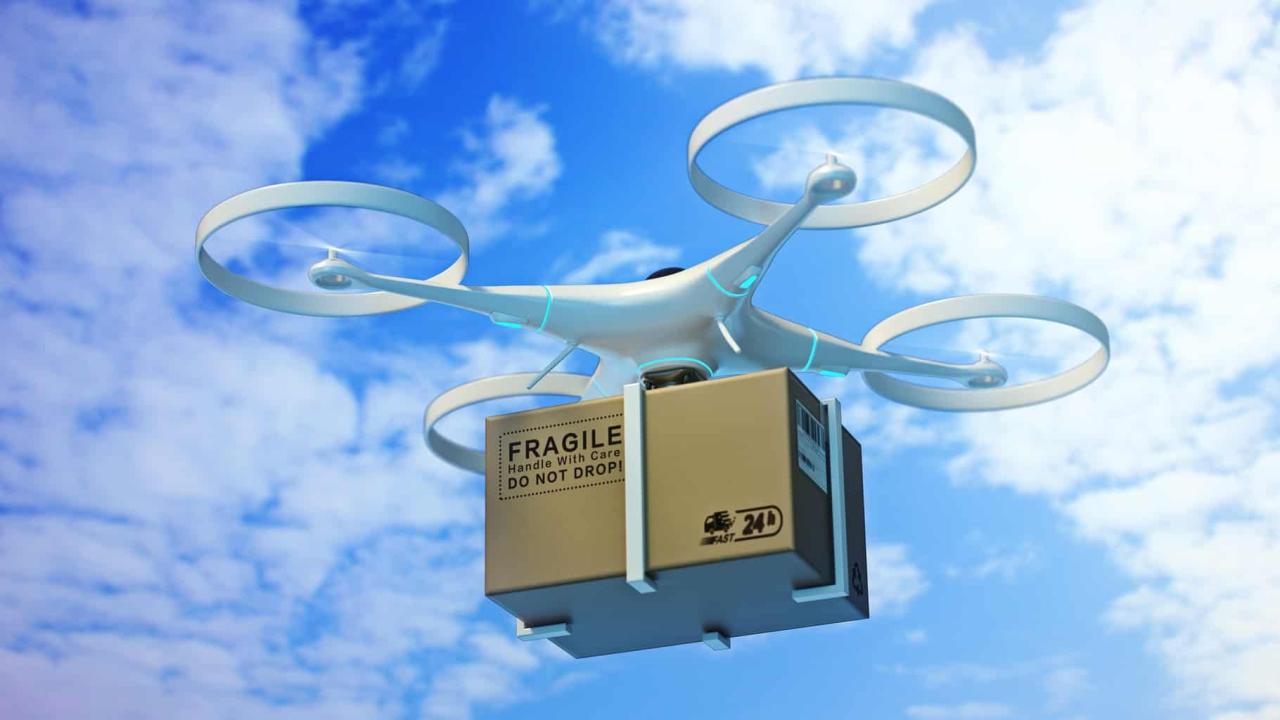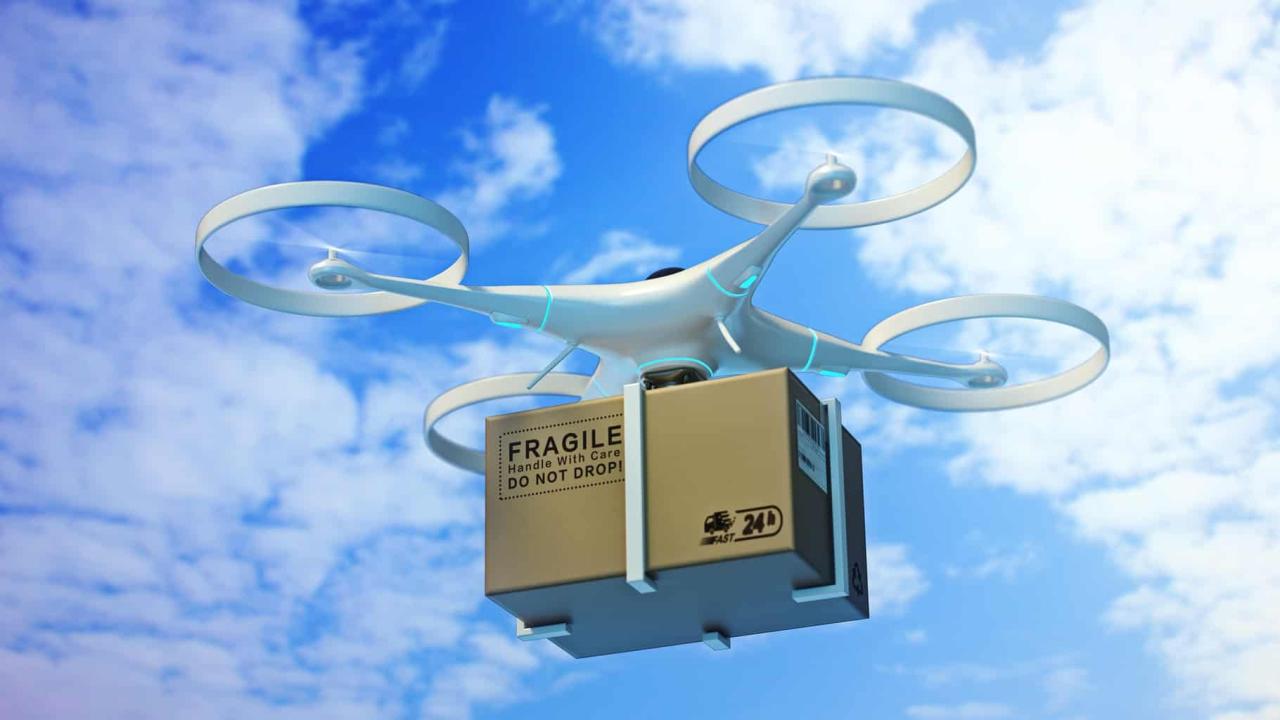Amazon drone delivery locations are rapidly expanding, transforming how we receive packages. This exploration delves into the current status of Amazon’s drone delivery program, examining the factors influencing location selection, the necessary infrastructure, customer experiences, safety protocols, and future expansion plans. We’ll cover everything from the types of items eligible for drone delivery to the regulatory hurdles involved and the potential challenges in establishing and maintaining the necessary infrastructure.
Get ready for a detailed look at this innovative delivery system.
We’ll investigate the technological advancements powering this ambitious project, comparing Amazon’s approach to competitors and analyzing the impact of population density on feasibility. We’ll also explore customer feedback, safety concerns, and the exciting possibilities for future growth. By the end, you’ll have a comprehensive understanding of where Amazon drones are delivering and why.
Amazon Drone Delivery Program: A Deep Dive: Amazon Drone Delivery Locations

Amazon’s drone delivery program, Amazon Prime Air, represents a significant leap forward in logistics and last-mile delivery. This article provides a comprehensive overview of the program’s current status, influencing factors in location selection, infrastructure requirements, customer experience, safety considerations, and future expansion plans.
Current Amazon Drone Delivery Program Status
Amazon Prime Air’s drone delivery service is currently operational in select locations, primarily focusing on rural and suburban areas. This targeted approach allows Amazon to test and refine its technology in environments with less complex airspace and logistical challenges compared to densely populated urban centers.
Currently, the types of items eligible for drone delivery are limited to smaller, lighter packages. Think everyday items, not large furniture or heavy appliances. This limitation is dictated by the current drone payload capacity and safety regulations.
Successful drone delivery operations rely on a robust technological infrastructure. This includes a sophisticated network of drone control centers, advanced flight management systems, real-time tracking and monitoring capabilities, and secure communication channels between the drones, ground control, and the Amazon delivery network. Redundant systems are crucial for ensuring safety and reliability.
Compared to competitors like Alphabet’s Wing and UPS Flight Forward, Amazon Prime Air has a larger operational scale but also faces challenges in navigating complex regulatory environments and achieving widespread adoption. While competitors may focus on specific niche markets, Amazon’s aim is broader, requiring more significant infrastructure investment and regulatory approvals.
So you’re curious about Amazon drone delivery locations? It’s a pretty cool system, and to get a sense of the advanced tech involved, check out the amazing drone displays at the orlando drone show. Seeing those synchronized light shows really puts into perspective the precision needed for package delivery. Learning about the technology used in those shows will give you a better appreciation for how Amazon’s drone delivery system works in different locations.
Factors Influencing Location Selection for Drone Delivery, Amazon drone delivery locations

The selection of drone delivery locations is a complex process involving numerous logistical, regulatory, and operational considerations. Population density plays a critical role, alongside proximity to Amazon fulfillment centers and the availability of suitable airspace.
Securing necessary regulatory approvals from the Federal Aviation Administration (FAA) is a major hurdle. This involves demonstrating compliance with safety regulations, obtaining airspace authorizations, and addressing potential environmental concerns. The process can be lengthy and complex, varying significantly across jurisdictions.
So you’re curious about where Amazon’s delivering packages via drone? They’re testing in several locations, expanding gradually. To get a sense of the potential for large-scale drone operations, check out the amazing visuals at the florida drone show ; it really showcases what’s possible. Seeing that kind of coordinated flight helps you understand the complexity Amazon’s tackling with its drone delivery program.
Population density directly impacts feasibility. Densely populated areas present greater challenges due to complex airspace management, increased risk of collisions, and potential noise pollution concerns. Sparsely populated areas offer a more controlled environment for testing and initial deployment.
Examples of successful and unsuccessful implementations vary based on several factors, highlighting the complexity of the undertaking. Success often correlates with proactive regulatory engagement, suitable infrastructure, and community acceptance. Failures often stem from insufficient planning, regulatory delays, or negative public perception.
| Location | Success/Failure | Reason | Population Density |
|---|---|---|---|
| Lockeford, CA | Success | Successful initial deployment, low population density, suitable infrastructure. | Low |
| College Station, TX | Success (limited) | Initial success but scaling challenges due to regulatory hurdles. | Medium |
| (Hypothetical Example) Urban Area X | Failure | High population density, complex airspace, significant regulatory obstacles. | High |
| (Hypothetical Example) Remote Rural Area Y | Success | Low population density, readily available airspace, minimal regulatory hurdles. | Very Low |
Infrastructure Requirements at Delivery Locations
Establishing effective drone delivery requires specific infrastructure at designated delivery locations. This includes secure landing zones, charging stations, and robust communication systems. Safety measures are paramount.
An ideal drone delivery landing zone would be a designated, flat, and unobstructed area, potentially enclosed or marked with clear boundaries. It would include safety features like perimeter fencing, obstacle detection systems, and emergency landing procedures. The zone should be clearly visible to the drone’s navigation systems and easily accessible for maintenance and retrieval.
Reliable communication systems are essential for real-time drone control, monitoring, and data transmission. This typically involves a combination of GPS, cellular networks, and dedicated communication links between the drone, ground control station, and Amazon’s broader logistics network. Redundancy in communication channels is critical to ensure uninterrupted operation.
Challenges in establishing and maintaining infrastructure include securing suitable land, obtaining necessary permits, ensuring safety and security, and addressing potential environmental impacts. Weather conditions, vandalism, and technological failures are additional factors to consider.
Customer Experience and Feedback

The customer experience with Amazon Prime Air begins with order placement and continues through delivery. Customers receive notifications about the delivery window and can track the drone’s progress in real time. Upon arrival, the drone autonomously delivers the package to a designated landing zone.
Positive feedback often highlights the speed and convenience of drone delivery, particularly for customers in remote areas. Negative feedback may focus on limited availability, package size restrictions, or concerns about privacy and security.
Compared to traditional delivery methods, drone delivery offers faster delivery times, especially for short distances. However, it currently lacks the flexibility and widespread availability of traditional delivery services. The customer experience is still evolving.
- Expand service area to include more densely populated regions.
- Increase the range and payload capacity of drones.
- Improve communication and tracking features for a smoother customer experience.
- Develop more robust security measures to address privacy concerns.
Safety and Security Considerations
Amazon implements stringent safety protocols to mitigate risks during drone delivery operations. These include redundant systems, comprehensive testing and maintenance procedures, and strict adherence to FAA regulations. Pilot training and emergency response plans are crucial.
Potential security risks include unauthorized access to drones, data breaches, and the potential for malicious use. Mitigation strategies involve secure communication protocols, encryption of sensitive data, and robust physical security measures to protect drones and ground infrastructure.
The regulatory framework governing drone operations and safety is constantly evolving. Compliance with FAA regulations is essential, including obtaining necessary certifications, adhering to flight restrictions, and reporting incidents promptly.
Emergency procedures include pre-planned landing zones for unexpected situations, immediate notification of ground control in case of malfunctions, and established protocols for retrieving the drone and securing the package. The procedures emphasize safety and minimize potential harm to people or property.
Future Expansion Plans and Potential
Amazon plans to expand Prime Air to more locations, aiming for broader coverage and increased delivery capacity. This will involve securing further regulatory approvals, investing in additional infrastructure, and enhancing drone technology.
Future locations are likely to be chosen based on population density, regulatory environment, and existing infrastructure. Areas with established logistics networks and favorable regulatory frameworks will be prioritized. Growth will likely be phased, starting with less densely populated areas and gradually expanding into more challenging environments.
So you’re curious about Amazon drone delivery locations? It’s a pretty cool system, right? To get a sense of the scale and potential of drone technology, check out this amazing florida drone show ; it showcases what’s possible. Seeing those coordinated light displays makes you realize how far drone technology has come, and how much potential there is for expanding Amazon’s drone delivery network in the future.
Projections for the growth of the drone delivery market are positive, with significant potential for expansion in both urban and rural settings. Increased efficiency, reduced costs, and expanding regulatory acceptance are driving factors.
A potential timeline for Amazon’s drone delivery program could include milestones such as expanded service areas in the next 2-3 years, increased payload capacity within 5 years, and the integration of advanced autonomous navigation and AI-powered systems within the next decade.
Last Point
Amazon’s drone delivery program represents a significant leap forward in logistics and technology. While challenges remain in infrastructure development, regulatory compliance, and ensuring customer satisfaction, the potential benefits are undeniable. As Amazon continues to expand its drone delivery network, we can expect to see more efficient and convenient package delivery options in the future. The successful implementation of this technology will redefine expectations for speed and convenience in the e-commerce landscape.
FAQ
How much does Amazon drone delivery cost?
Currently, Amazon doesn’t charge extra for drone delivery; it’s integrated into standard Prime shipping.
What happens if a drone crashes?
Amazon has safety protocols in place, including redundant systems and emergency procedures. In case of a crash, they investigate the cause and take corrective actions.
Can I choose drone delivery for every order?
No, drone delivery is only available for eligible items and in specific locations. Check at checkout to see if it’s an option for your order.
How long does drone delivery take?
Delivery times vary by location and order, but it’s generally much faster than traditional shipping methods.
What types of weather conditions prevent drone delivery?
Adverse weather, like heavy rain, strong winds, or snow, can ground drones for safety reasons.
